Osteochondrosis is a chronic degenerative-dystrophic disease that develops under the influence of many quite different factors. Pathologic changes first occur in the nucleus pulposus (the inner contents of the disc) and then spread to the fibrous ring (the outer covering of the disc) and other elements of the spinal motion segment (SDS). This can be a consequence of the natural aging process of the body, or it can occur against the background of injuries, increased loads on the spine and other causes. In any case, osteochondrosis is only the first stage of destruction of the intervertebral disc, and if left untreated, protrusions and hernias are formed, which often require surgical removal.
The intervertebral disc is a cartilaginous structure that separates the vertebral bodies and acts as a shock absorber.
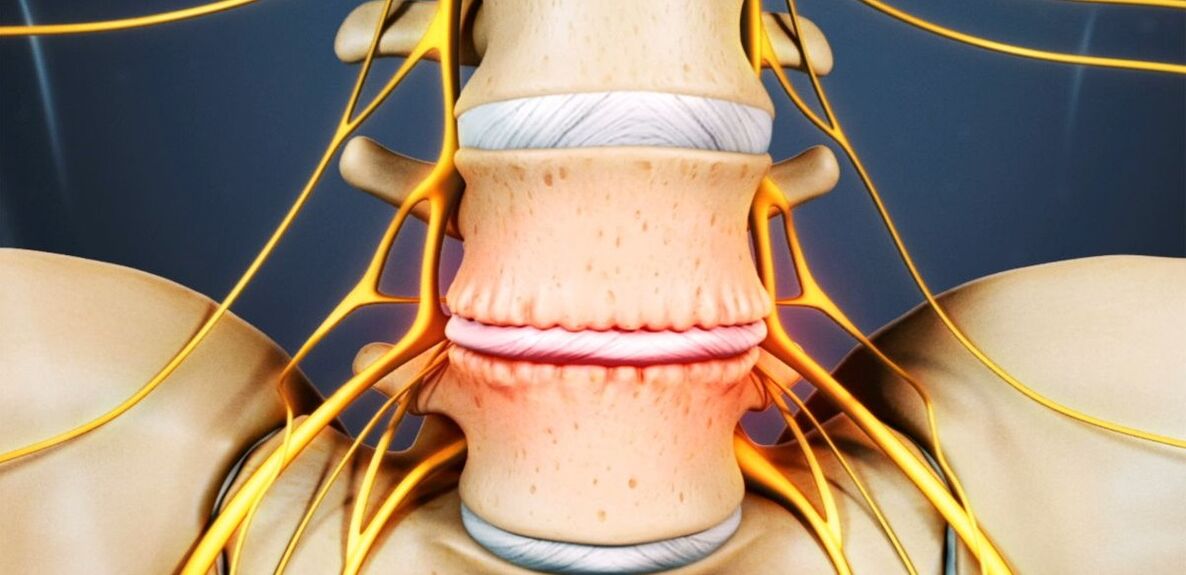
Osteochondrosis of the lumbar spine: what is it?
Osteochondrosis affects 48-52% of people. And osteochondrosis of the lumbar spine is the most common. The disease can affect any disc of the lumbosacral spine, several, or even all. L5-S1, L4-L5, less often L3-L4 disks suffer most often. The upper lumbar vertebrae (L3-L2 and L2-L1) are affected much less frequently.
The prevalence of lumbar osteochondrosis is due to the fact that the greatest load when performing physical work, especially lifting and carrying weights, walking, running and sitting, falls on the lower back. The lumbar spine consists of 5 vertebrae, which are much larger than the thoracic and cervical vertebrae. Accordingly, the intervertebral discs separating them are larger. Normally, the lumbar region has a slight anterior curvature (physiological lordosis). It is the last moving part of the spine and is adjacent to the fixed sacrum, so most often they speak of lumbosacral osteochondrosis.
While osteochondrosis used to be considered a disease of old age, today the first manifestations can already be observed at the age of 15-19 years. 1. 1% of people over the age of thirty already suffer from severe symptoms of degenerative-dystrophic changes in the intervertebral discs. And among representatives of the older age group (from 59 years old), clinical manifestations of the disease are already present in 82. 5%. At the same time, the incidence of pathologies is steadily increasing, which is due not only to an increase in the average age of the country's population, but also to lifestyle changes not directed for the better.
reasons for development
There is still no consensus on the etiology of degenerative diseases of the spine. Nevertheless, the main theory of their development is involutive. According to them, osteochondrosis is a consequence of previous damage to the intervertebral disc and bone structures of the spine, as well as the occurrence of inflammatory and other processes. The theory suggests that degenerative changes are genetically predetermined and, in fact, inevitable. And their clinical manifestation, especially in young and middle-aged people, is due to the influence of various endogenous and exogenous factors.
So, the development of osteochondrosis of the lumbar spine is facilitated by:
- heavy physical work, especially related to heavy lifting;
- sedentary, sedentary lifestyle;
- any back injury, including bruises;
- overweight;
- metabolic disorders;
- Postural defects, deformation of the spine;
- flat feet and other foot pathologies;
- Pregnancy, especially multiple pregnancies.
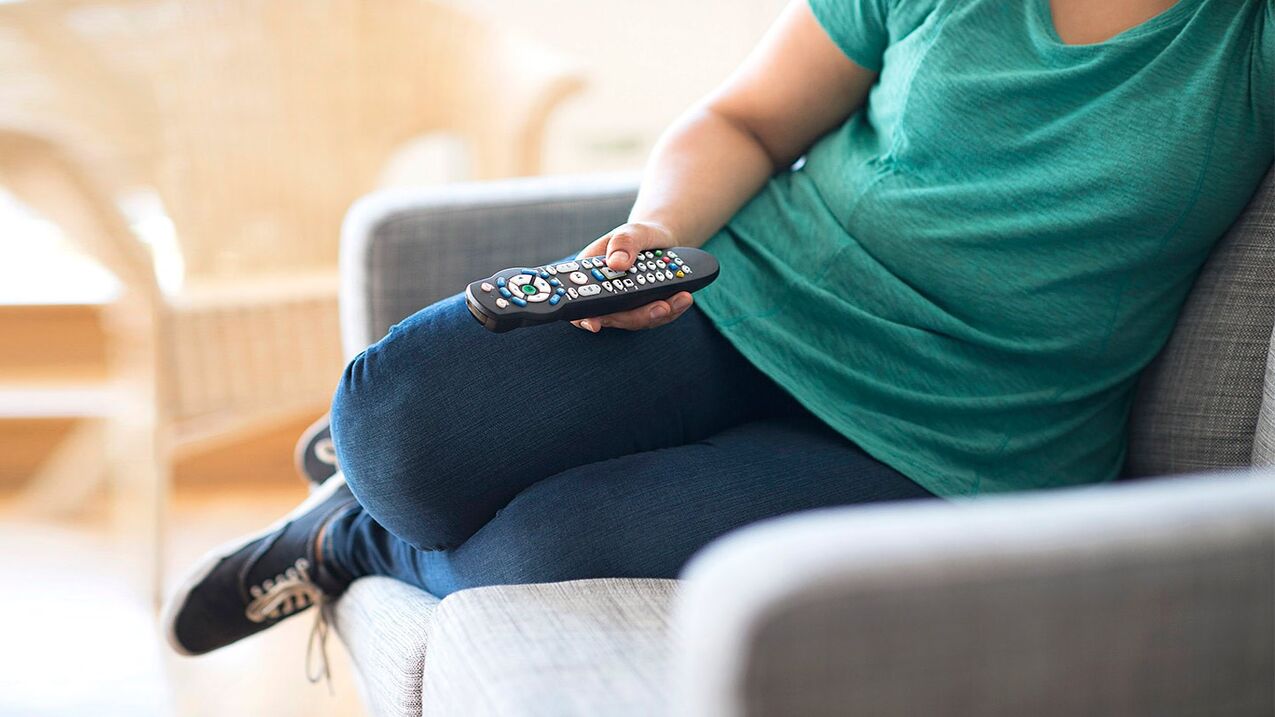
pathogenesis
Regardless of the causes, degeneration of the intervertebral disc occurs when the intensity of the processes of catabolism (cleavage and oxidation of molecules) of matrix proteins begins to exceed the speed of their formation. One of the key points in this process is disc malnutrition.
Because, like most adult cartilage, they have no direct blood supply, being devoid of blood vessels, the supply of nutrients to them and the removal of metabolites occurs by diffusion with sequential compression and relaxation of the disc during movement. The main structure that supplies energy to the disk are the endplates, located on its top and bottom.
The endplates themselves are a double layer formed by cartilage and bone tissue cells. Accordingly, the cartilaginous side they are adjacent to the intervertebral disc, and the bone - to the vertebral bodies. They are characterized by sufficiently good permeability, which ensures the exchange of substances between cells, the intercellular substance of the intervertebral disc and the blood vessels running in the vertebral bodies. Over the years, especially under the negative influence of external and internal factors, the structure of the endplates changes and their blood supply decreases, which leads to a decrease in the intensity of metabolism in the intervertebral disc. This reduces its ability to produce new matrix, leading to a progressive decrease in its density with age.
At the molecular level, this is accompanied by:
- a decrease in the rate of diffusion of nutrients and metabolites;
- decrease in cell viability;
- Accumulation of cell decay products and altered matrix molecules;
- a decrease in the production of proteoglycans (high molecular weight compounds responsible for the formation of new cartilage cells and which are the main sources for the synthesis of chondroitin sulfates);
- Collagen scaffold damage.
Possible Consequences
As the changes progress, the disc becomes dehydrated and the nucleus pulposus loses its ability to adequately distribute the loads it is subjected to. Therefore, the pressure within the disc becomes uneven, and hence the fibrous ring experiences overload and compression at multiple locations. Since this happens with every movement of a person, the annulus is regularly subjected to mechanical pressure. This leads to adverse changes therein.
A decrease in disc height and elasticity often leads to compensatory changes in the adjacent vertebral bodies. Bone growths, so-called osteophytes, form on their surfaces. They tend to increase in size over time and even merge with each other, eliminating the possibility of movement in the affected PDS.
Due to the fact that malnutrition damages the collagen skeleton, under the influence of the pressure of the nucleus pulposus in certain places the normal structure of the fibers that form the fibrous ring is disturbed. Without intervention, this will eventually lead to cracks and breaks in them. Gradually, more and more fibers of the fibrous ring are torn at the point of pressurization, leading to its bulging. This is particularly favored by increased loads on the spine. And since the lumbar spine bears the brunt of movement and any physical activity, it suffers most often.
The bulging of the intervertebral disc without the final rupture of the fibrous ring and with the size of its base larger than the protruding part is called bulging. With its complete fracture in one place or another, an intervertebral hernia is diagnosed.
With the destruction of part of the fibers of the fiber ring, the pressure in the disc gradually decreases, which leads to a decrease in tension and the fibers themselves. This leads to a violation of its fixation and, as a result, pathological mobility of the affected segment of motion of the spine.
The vertebral motor segment (SMS) is a structural and functional unit of the spine made up of the intervertebral disc, adjacent vertebral bodies, their facet joints, ligaments, and muscles attached to these bony structures.
The normal function of the spine is only possible with the correct function of the PDS.
Symptoms of osteochondrosis of the lumbar spine
The disease can be asymptomatic for a long time, and then manifest itself as a slight discomfort in the lumbar region, gradually gaining strength. But in some cases, osteochondrosis of the lumbar spine begins acutely and immediately provokes a strong pain syndrome. In most cases, signs of pathology appear only after 35 years.
Back pain is the main symptom of the disease. It can be of different character and be both painful and dull, acute, constant or episodic. But basically for the pathology, especially in the early stages of development, the alternation of periods of exacerbation and remission is characteristic, and both hypothermia and lifting a heavy object or an unsuccessful, sudden movement can provoke a further deterioration in well-being.
Pain is often accompanied by numbness and tightness in the back muscles. They are made worse by physical exertion, sudden movements, heavy lifting, bending over, and even coughing and sneezing.
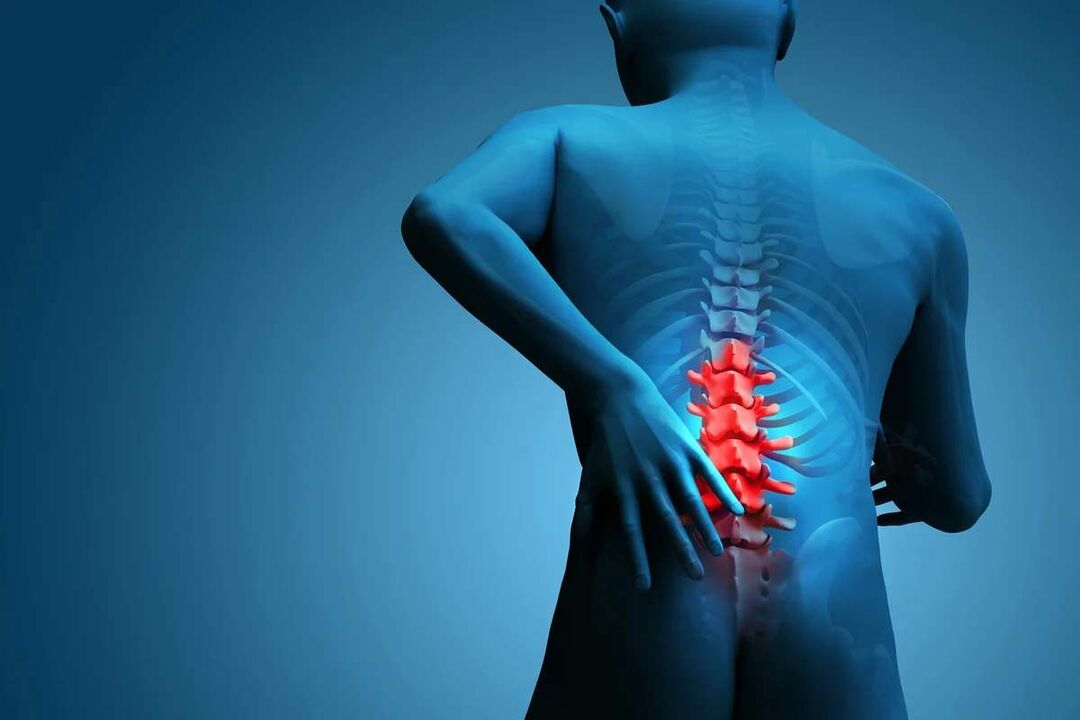
If, due to the instability of the vertebral bodies, the nerve root coming from the spinal cord is pinched by one or another anatomical structure, this leads to the development of corresponding neurological disorders. Their main manifestations are:
- shooting, severe pain radiating to the sacrum, buttocks, lower limbs, or perineum;
- sensitivity disorders of varying severity;
- mobility impairments, lameness;
- Weakness in the muscles innervated by the pinched nerve.
In the lumbar spine, the spinal cord ends at the level of 1-2 vertebrae and merges into the so-called cauda equina, which is formed by a collection of spinal roots. In addition, each of them is responsible not only for the innervation of muscles, but also for certain organs of the small pelvis, so prolonged compression can disrupt the work of the corresponding organ. This can lead to the development of impotence, infertility, gynecological diseases, hemorrhoids and other disorders.
The clinical picture of osteochondrosis of the lumbar spine, especially with a long course and the occurrence of compression of the roots of the spine, largely depends on the level of the lesion, that is, which particular disc has undergone degenerative-dystrophic changes.
- The defeat of the L3-L4 disc - pain is inflicted on the anterior-internal parts of the thigh, lower leg and inner ankle. This is accompanied by a decrease in the sensitivity of the front surface of the thigh, a decrease in the severity or loss of knee jerk, as well as a decrease in the strength of the quadriceps muscle.
- The defeat of the L4-L5 disc - pain is given from the upper part of the buttocks to the outer parts of the thigh and lower leg. Less commonly, this is accompanied by the spread of pain to the back of the feet, including 1-3 fingers. There is a decrease in sensitivity and muscle weakness in these areas. Sometimes hypotrophy and incomplete extension of the big toe develop.
- Damage to the L5-S1 intervertebral disc - pain begins in the middle zone of the buttocks and descends along the posterior or posterior surface of the thigh and lower leg to the heel and can capture the outer edge of the foot like 4-5 fingers. In these areas of the lower extremities, sensitivity decreases, and the gastrocnemius and gluteus maximus often decrease in size, which accompanies their weakness. If the spinal root running at the level of this PDS is affected, a decrease or loss of the Achilles and plantar reflexes can be observed.
The L1-L2 and L2-L3 discs are rarely affected.
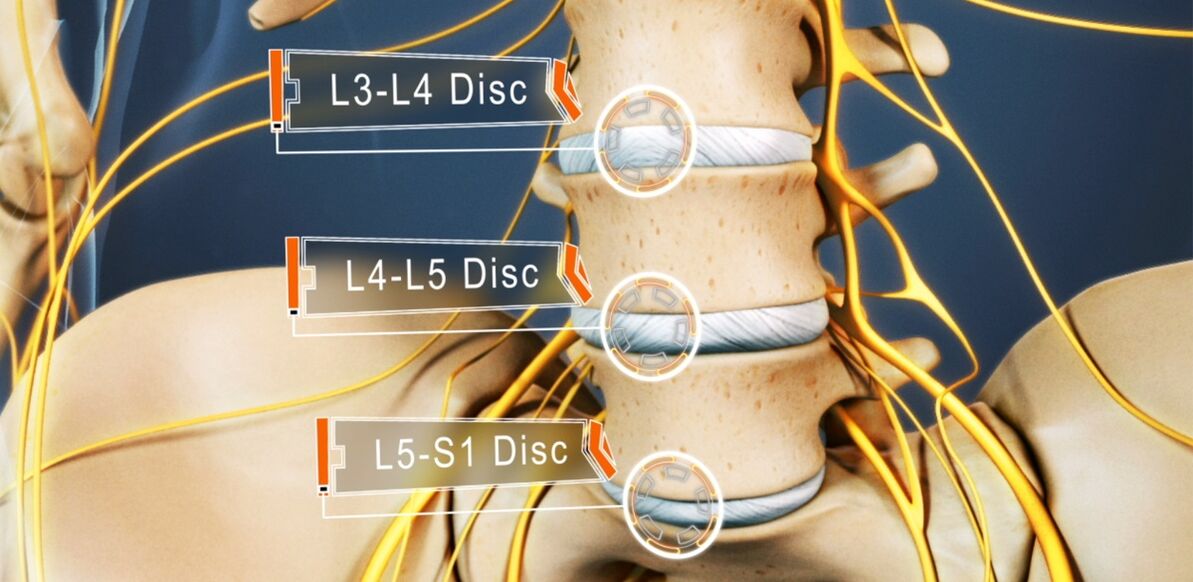
Pain that accompanies the disease restricts a person and significantly reduces their quality of life. Since they persist for a long time and recur periodically, if not constantly present, it can only affect the psycho-emotional state. As a result, more than half of patients show signs of chronic emotional stress, depressive disorders, etc.
diagnosis
If there are signs of osteochondrosis of the lumbar spine, you should contact a neurologist or vertebrologist. First of all, the doctor collects an anamnesis, which consists in clarifying the nature of the ailments, the characteristics of the pain, the conditions for its occurrence and reduction, the characteristics of a person's working life, etc.
The second stage of diagnosis, performed as part of the first doctor's consultation, is a physical exam. In the process, the doctor evaluates the condition of the skin, posture, the depth of physiological curvatures of the spine, the presence of its curvature, etc. The condition of the muscles surrounding the spine, called paravertebral, is necessarily assessed, since they are often painful andtense, which is the body's reflex response to inflammation and discogenic pain.
Already on the basis of the data obtained during the examination and questioning of the patient, the neurologist can suspect the presence of osteochondrosis of the lumbar spine. However, in order to exclude possible concomitant diseases, as well as to confirm the diagnosis and accurately determine the extent of damage, the severity of degenerative-dystrophic changes in the intervertebral disc and the involvement of bone structures, laboratory and instrumental diagnostic methods are required.
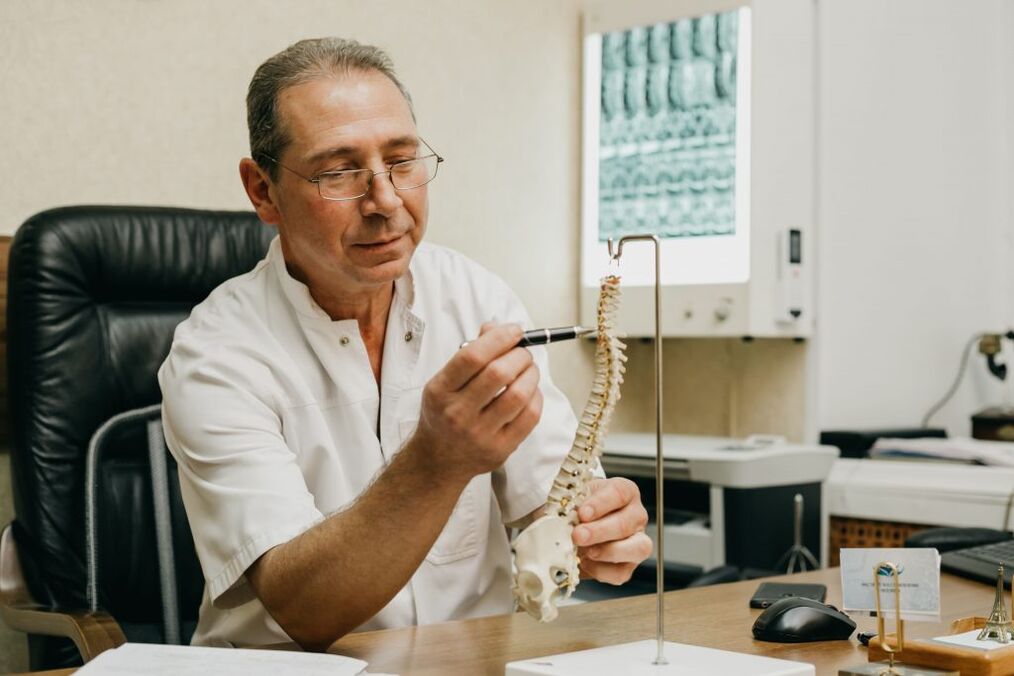
laboratory diagnostics
Analyzes of various types are not decisive for the diagnosis of osteochondrosis of the lumbar spine. Rather, they are aimed at assessing the degree of the inflammatory process and detecting concomitant diseases.
So they can be assigned:
- user account control;
- OAM;
- blood test for sugar levels;
- blood chemistry.
Instrumental diagnostics
All patients with suspected osteochondrosis of the lumbar spine have been shown to have:
- x-ray of the lumbar spine in two projections - allows you to determine the structure of bone structures, anomalies, formed osteophytes, changes in the facet joints, etc . to recognize;
- CT - allows you to detect changes in bone structures at earlier stages of development than x-rays and detect indirect signs of osteochondrosis;
- MRI is the best method for diagnosing pathological changes in cartilage and other soft tissue structures, which makes it possible to identify the smallest changes in intervertebral discs, ligaments, blood vessels and spinal cord and to accurately assess their severity and possible risks.
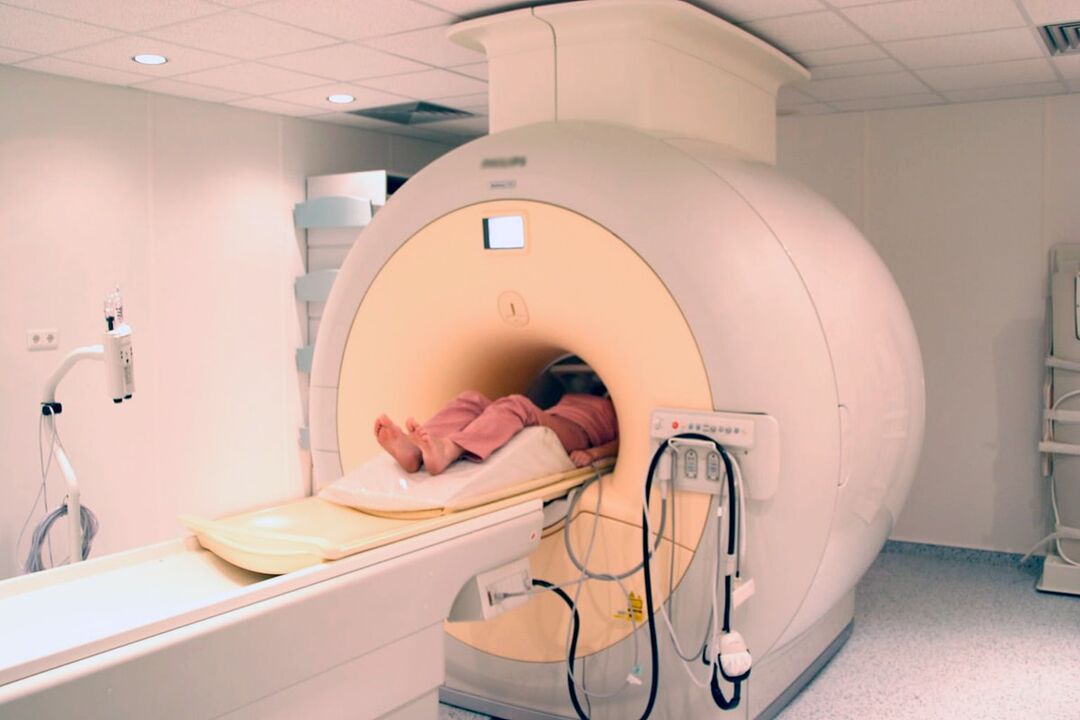
In addition, it can be recommended:
- Densitometry - a method of determining bone density, which makes it possible to diagnose osteoporosis, which is especially common in the elderly;
- Myelography - allows you to assess the condition of the liquor pathways of the spinal cord and the degree of damage to the protruding disc, which is especially important if there is an already formed herniated disc of the lumbar spine.
Treatment of lumbar osteochondrosis
When diagnosing osteochondrosis, as a rule, all patients are initially prescribed conservative therapy, unless there is a pronounced and progressive neurological deficit. But her character is selected strictly individually.
Since the disease is chronic and the ability of the intervertebral discs to regenerate is severely limited, especially with pronounced degenerative-dystrophic changes, the main goal of therapy is to stop its further progression and eliminate the symptoms that bother the patient. Therefore, treatment is always complex and includes:
- drug therapy;
- manual therapy;
- Physical therapy;
- exercise therapy.
In the acute phase, patients are shown to limit physical activity or even adhere to bed rest for 1-2 days. This helps relax the muscles and reduce pressure in the disc. If you have to sit, walk or do physical work for a long time, you should wear a stabilizing lumbar brace.
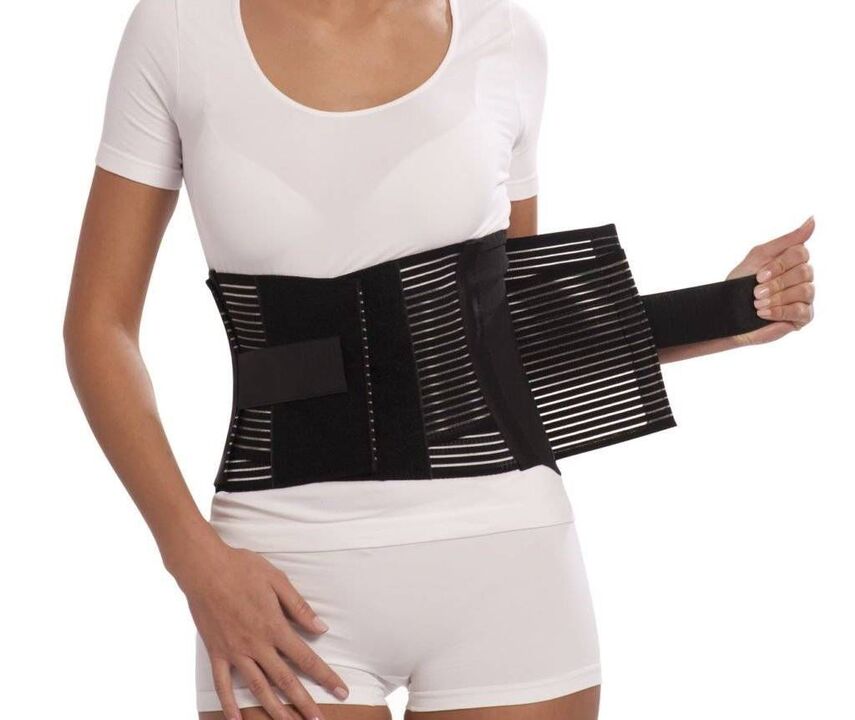
On the other hand, after the end of the acute phase and during the remission of the disease, it is important to move as much as possible, but with caution and to the exclusion of increased stress on the lower back. Patients need to acquire the skills of proper sitting, lifting objects from the floor, carrying heavy loads, since all this affects the course of the pathology. It's important to avoid tipping and sudden movements, lifting something off the floor or low surfaces after bending your knees, and not bending over. You should only sit with a straight back in a chair that supports your back well. It is also important to take regular breaks for a short workout when you are sitting down. Falls, jumps, running fast and hypothermia must be avoided at all costs.
With osteochondrosis, it is important to keep body weight within optimal limits, and with obesity, diet and physical exercises appropriate to the patient's condition are indicated, since excess weight puts a greater load on the lower back and leads to a faster progression of pathological changes in the discs.
On average, conservative therapy is usually designed for 1-3 months, but can also last longer. But even after completing the main course of treatment prescribed by the doctor, it is necessary to continue taking a number of medications, exercise therapy and follow lifestyle recommendations.
Medical therapy
The main components of drug therapy are individually selected drugs from the NSAID group. When choosing, the doctor takes into account not only the severity of the pain syndrome and the course of the inflammatory process, but also the nature of concomitant diseases, especially those of the digestive tract, since with prolonged use NSAIDs can adversely affect their condition mucous membranes and provoke an exacerbation of various pathologies of the digestive system.
It is necessary to use NSAIDs in acute low back pain and immediately after its occurrence. Best in 1-2 days. Depending on the severity of the patient's condition, they can be administered intramuscularly, in the form of rectal suppositories, local remedies, and in oral form. The recording period should not exceed 2 weeks. In the future, an individually selected drug is taken as needed, but frequent use should be avoided.
Recently, drugs, which include selective inhibitors of cyclooxygenase-2, are more often preferred as the active ingredient.
Also, patients are prescribed drugs of the following groups:
- muscle relaxants - help to relax overworked muscles, thereby relieving back pain;
- Chondroprotectors - improve the course of metabolic processes in the intervertebral disc (especially effective if they are started in the earliest stages of the development of lumbar osteochondrosis);
- B vitamins - help improve nerve conduction;
- Antidepressants and anxiolytics - are used in long-term osteochondrosis, which leads to depression, chronic fatigue and other mental disorders.
In the case of very severe pain, especially of neurological origin, therapeutic blockades are carried out. They involve the introduction of anesthetics in combination with corticosteroids at points near the compressed nerve, resulting in the rapid elimination of pain. However, the procedure may only be carried out in a medical facility by specially trained health personnel, as it is associated with a risk of complications.
Manual therapy
Manual therapy allows not only to improve the quality of blood circulation in the area of influence, but also to significantly reduce the severity and duration of pain in osteochondrosis. It effectively relieves muscle tension and allows you to get rid of functional blocks, which significantly increases mobility in the affected SMS.
In addition, with a well-performed manual therapy, it is possible not only to increase the distance between the vertebrae, bringing them back into their anatomically correct position, but also to release the compressed nerve roots. As a result, pain is quickly eliminated, and neurological disorders disappear. It also reduces the likelihood of complications and disruptions in the work of internal organs.
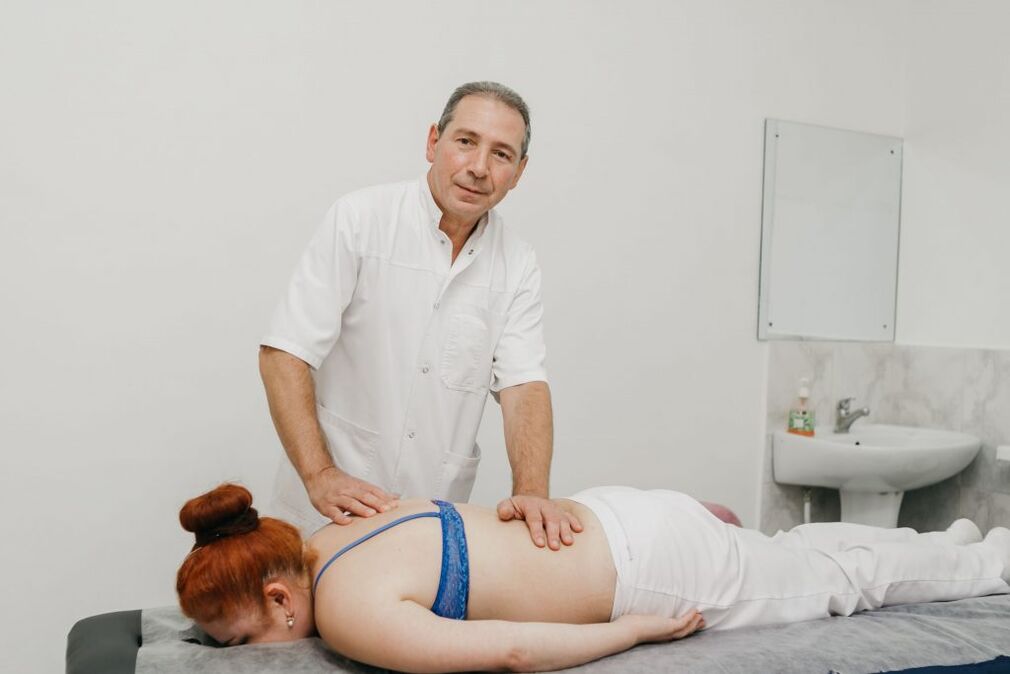
Additional positive properties of manual therapy include improving mood, strengthening immunity, activating the body's natural recovery mechanisms and increasing performance. As a rule, there is a noticeable improvement in well-being after the first session, and the effect will increase in the future. As a rule, the course consists of 8-15 sessions, and it is important to complete it to the end, even with complete normalization of well-being.
physical therapy
After the acute inflammation subsides, courses of physiotherapeutic procedures are indicated, which not only help relieve pain, but also improve microcirculation, nutrition and the course of reparative processes in the field of degenerative-dystrophic changes. Most often, patients are prescribed:
- electrophoresis with the introduction of drugs;
- electrical neuromyostimulation;
- ultrasound therapy;
- laser therapy;
- magnetotherapy;
- UHF.
Which specific methods of physiotherapy give the best effect, the frequency of their implementation, the duration of the course and the possibility of combining them with other types of exposure is determined individually for each patient.
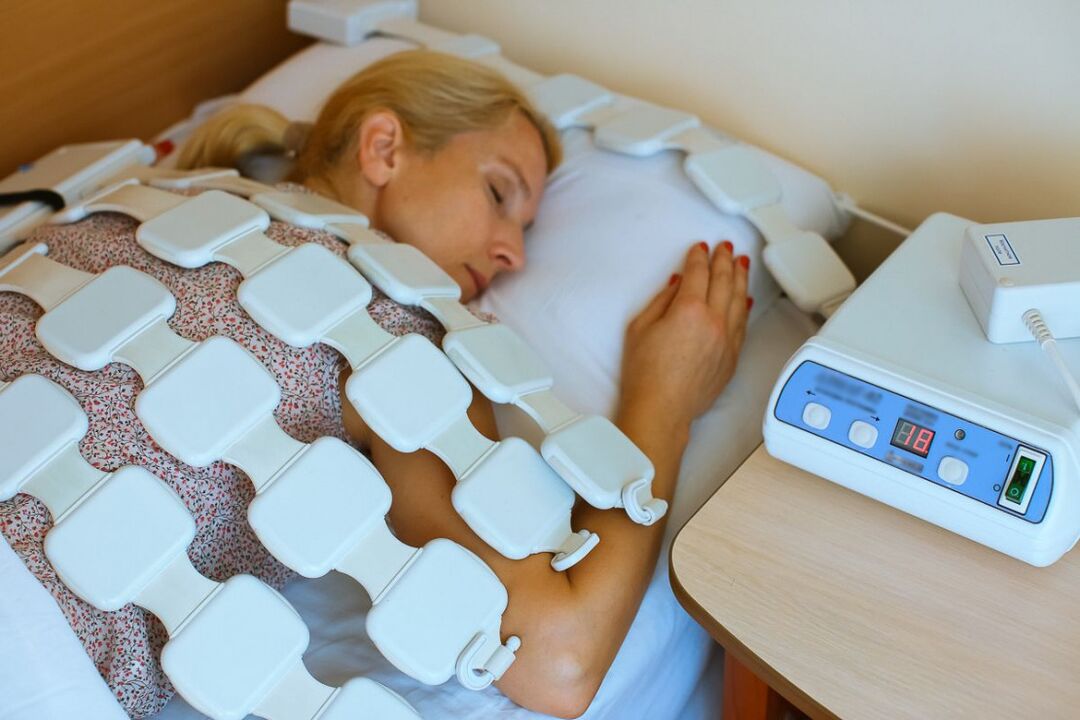
Traction therapy shows very good results in osteochondrosis of the lumbar spine. This makes it possible to increase the distance between the vertebral bodies, which immediately reduces the load on the affected intervertebral discs. After the session, the patient must wear an orthopedic brace to consolidate the results.
exercise therapy
After eliminating acute pain, the treatment program is necessarily supplemented with exercise therapy. Its main role is to stretch the spine and relax the cramping muscles of the lower back. Also, therapeutic exercises will help strengthen the muscular corset, create reliable support for the spine and improve posture. This inevitably activates blood circulation and improves metabolic processes, which has a positive effect on the nutrition of the intervertebral discs.
For each patient, a set of exercises is selected individually according to the degree of degenerative-dystrophic changes, the level of physical development of the patient, the nature of concomitant diseases, age and other factors. First of all, it is recommended to study under the guidance of an experienced exercise therapy teacher.
All patients with degenerative changes in the spine are recommended to visit the bath 2-3 times a week, since swimming lessons minimize the load on the spine, but effectively strengthen the back muscles.
Osteochondrosis of the lumbar spine is one of the most common diseases. At the same time, it can deprive a person of his ability to work for a long time and even lead to disability due to the development of complications. Therefore, it is important not to ignore the first symptoms of the disease when it is easiest to deal with. With the appearance of pain, and especially numbness, reduced mobility and back pain, you need to contact a neurologist as soon as possible, undergo the necessary examination and start treatment. In this case, it is possible to stop the pathological process and return to a normal, full life without pain and significant limitations.



























